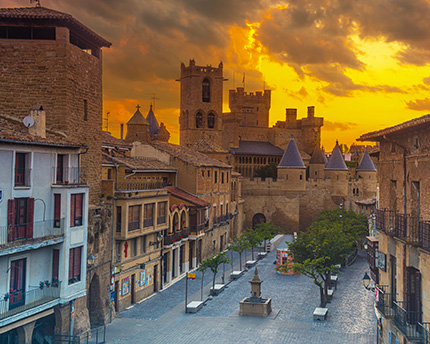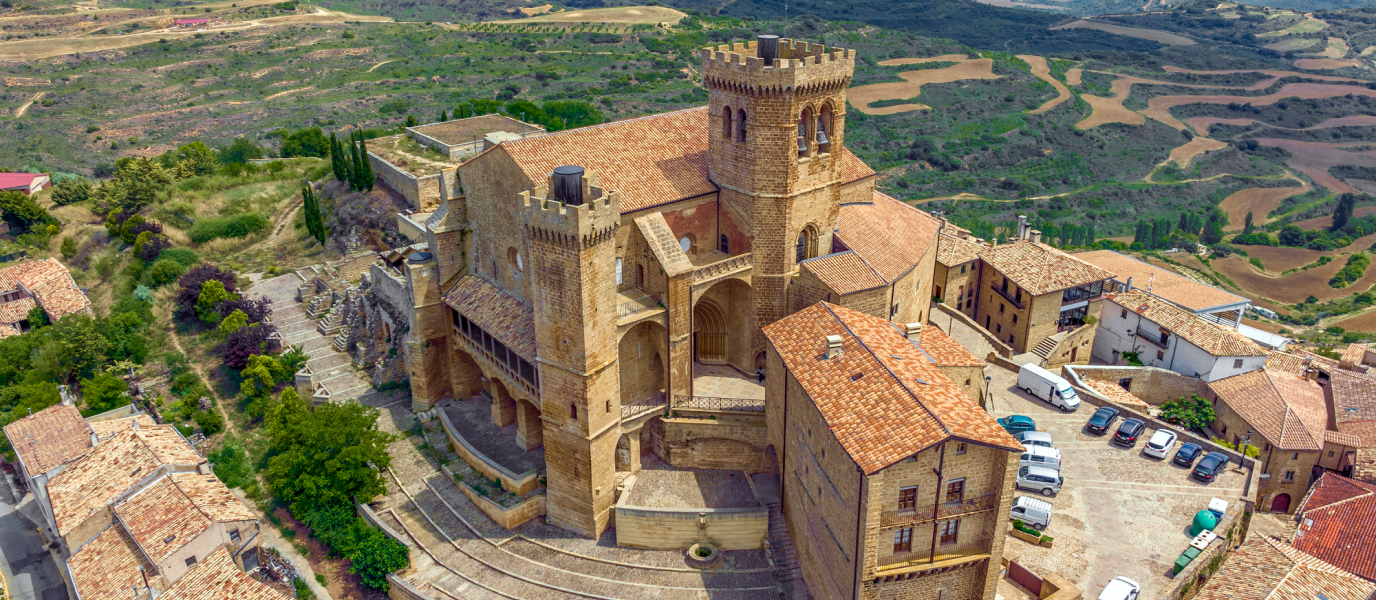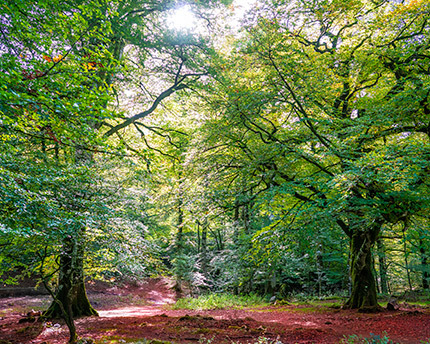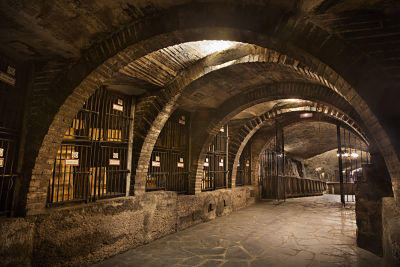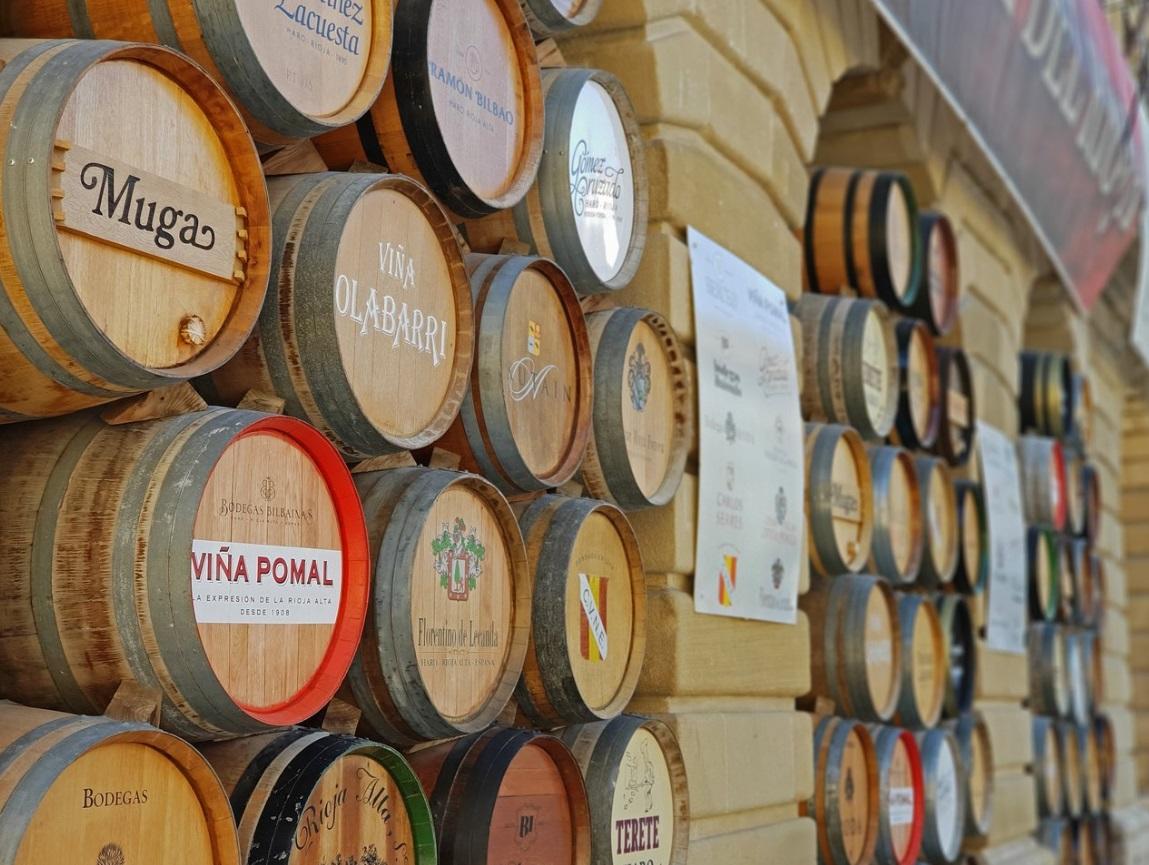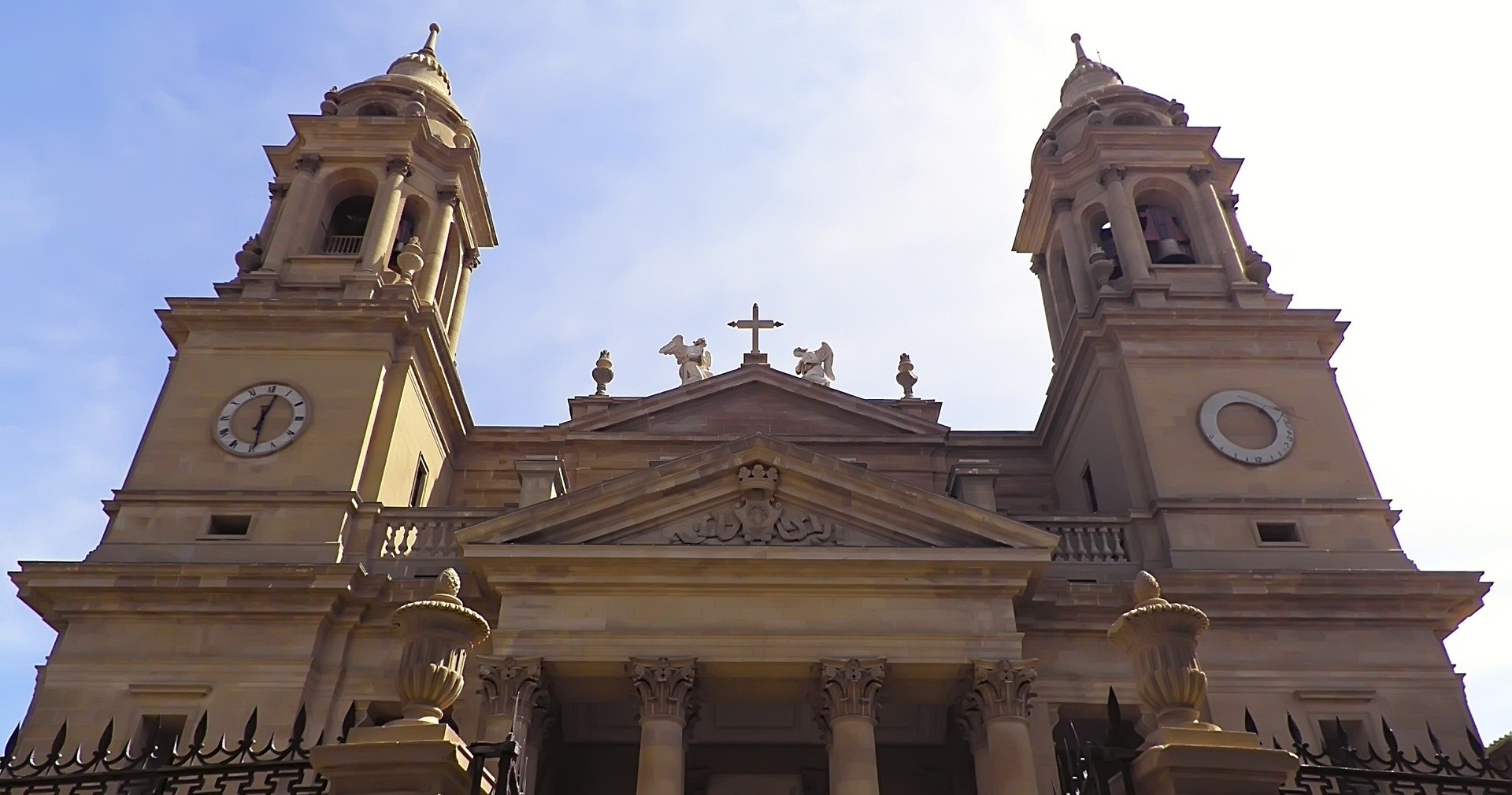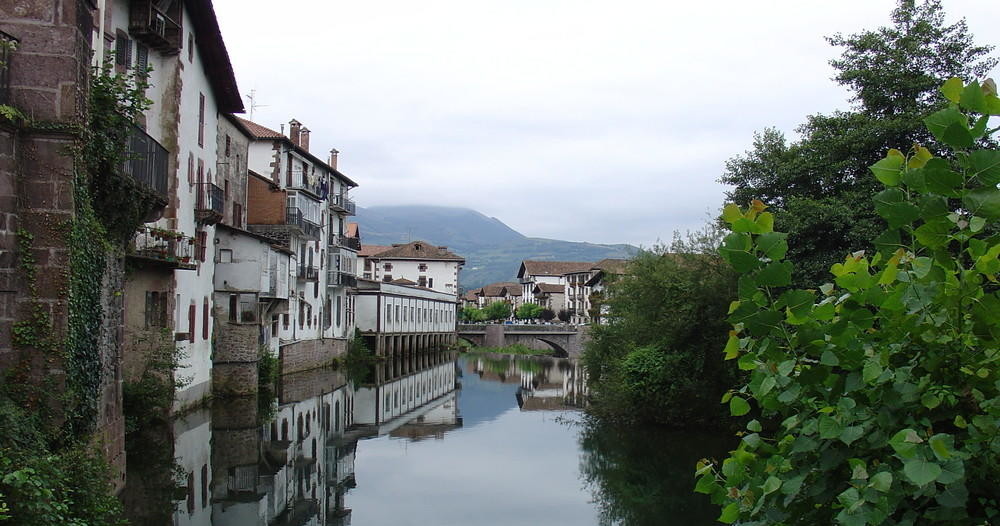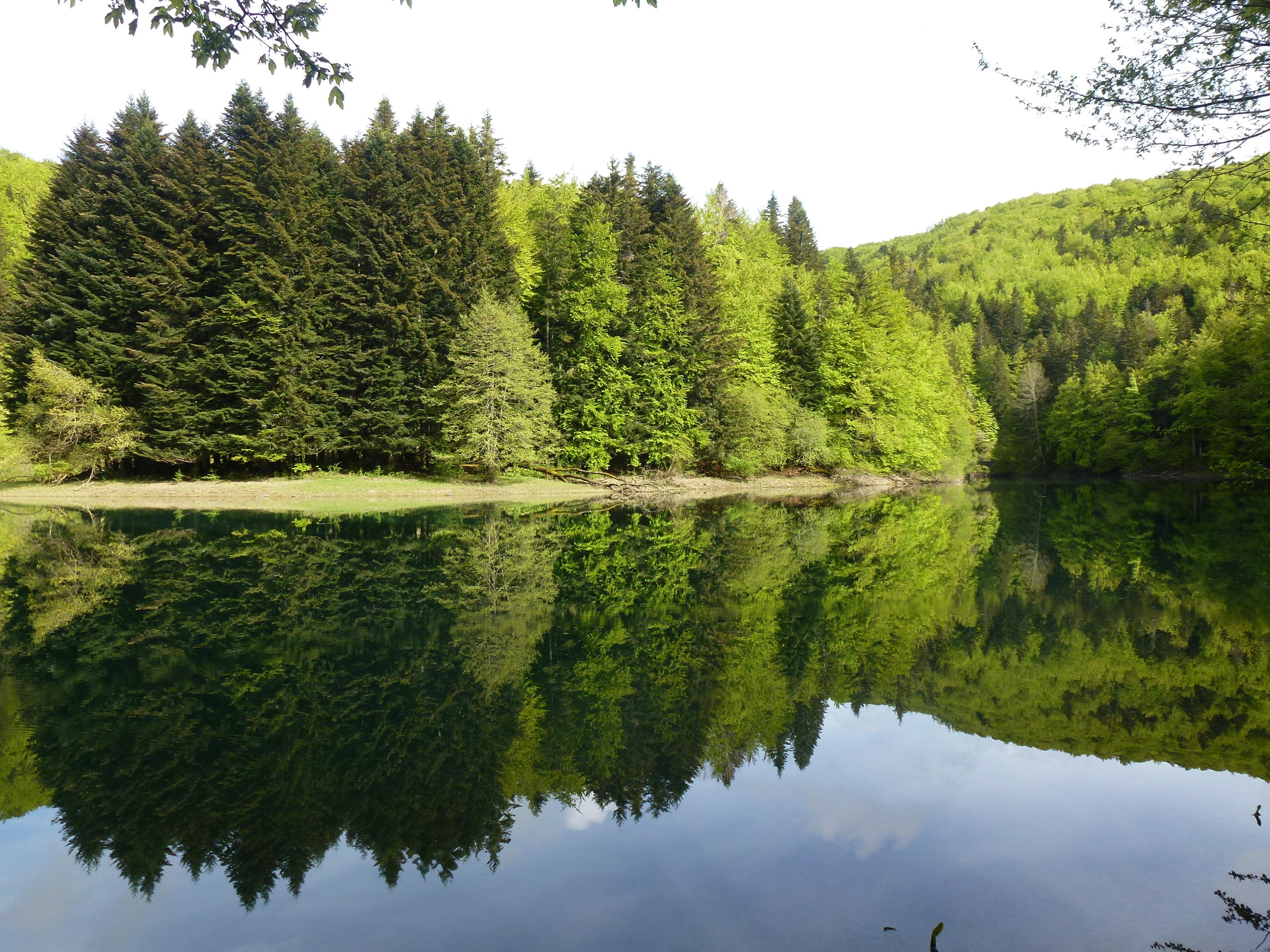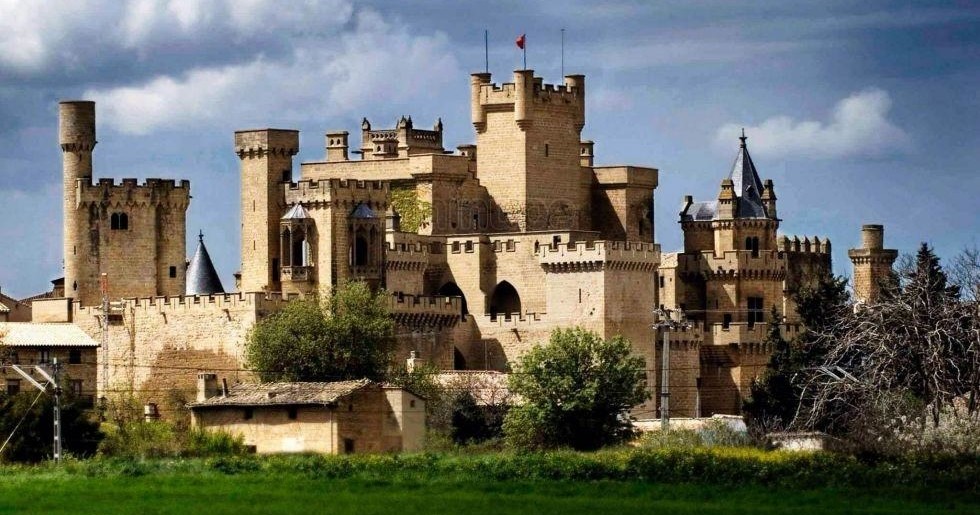The region of Navarre is home to magical spots such as Bardenas Reales, a desert-like badlands, and lush and leafy Irati Forest. And in-between? Historical cities that include famous Pamplona, villages like Olite and Roncesvalles, and truly astonishing places such as the Elizondo Valley and its witches, or Ujué and its fortified cathedral.
Towns and villages
Pamplona
The capital of Navarre is a city of historical sites and incredible green spaces. Start your visit in the historic centre, following the route of the Sanfermines from Santo Domingo to Calle Estafeta, and then take a stroll around Plaza del Castillo before stopping for pintxos in Calle Espoz y Mina and Calle San Nicolás.
Pamplona also has five kilometres of walls, bastions and a citadel that was built on the orders of Philip II to defend the city from the French. Today it’s the best conserved defensive monument in Europe.
The cathedral of Santa María la Real is one of the largest in Spain and leads to a route through the city’s two best parks, French-style La Taconera and Yamaguchi, a Japanese garden.
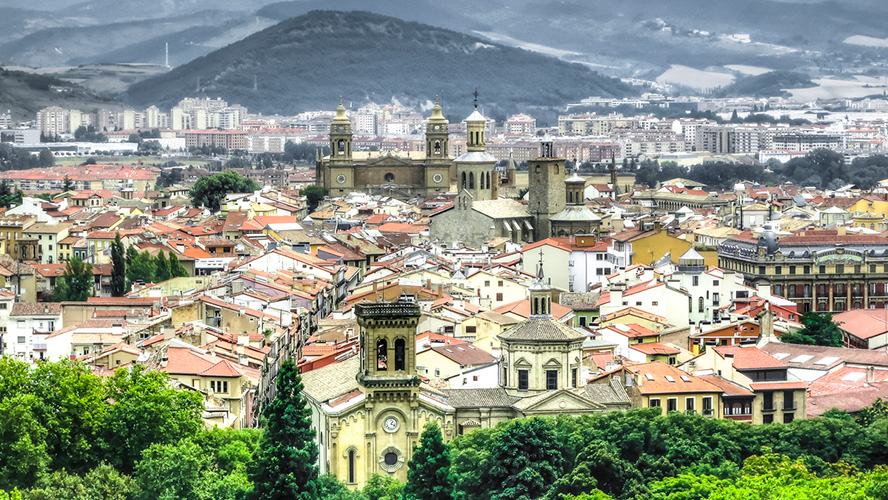
Ujué
This small rocky village sits atop a mountain and has views over much of the Navarre countryside. A church-fortress stands at the very top that is dedicated to the Virgin of Ujué; at her feet she guards the heart of King Charles II ‘the Bad’, King of Navarre.
Wandering the village’s steep cobbled streets is the best way to work up an appetite for two of its most famous gourmet delights: migas al pastor and caramel-coated almonds.
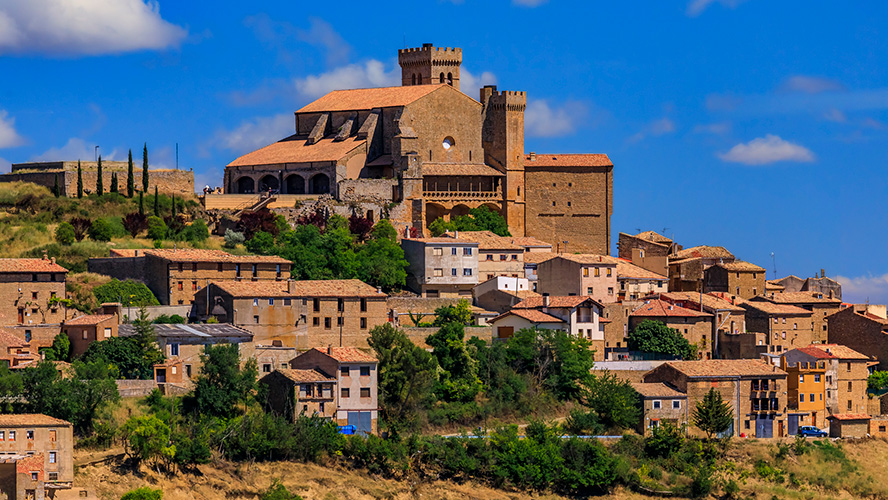
Leyre Monastery
This is one of the most incredible places in Navarre due to its location at the foot of the Leyre Mountains, and its long history as the burial place of the first kings of Navarre.
The royal pantheon is inside a space protected by an iron railing that guards a decorated oak chest. This is the resting place of at least 15 members of the Navarre dynasty and the setting inspires peace and meditation. The mausoleum makes a strong impression on visitors to the complex, as does the sound of Gregorian chants and prayers by the Benedictine monks who care for the buildings.
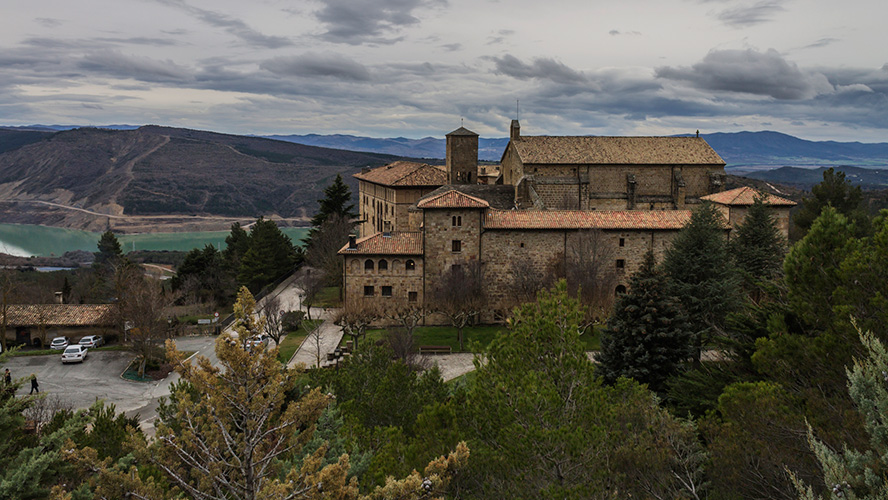
The monastery was built from stone from a nearby quarry but it’s not known exactly when it was founded, however, a martyr from Cordoba wrote about having been here in the 11th century.
One of the chapels has an altarpiece of two child saints, Nunilo and Alodia; their bodies were transferred to the monastery and their first miracles occurred here. Also, make sure you don’t miss the Porta Speciosa, an 11th century portico.
Apart from the spiritual and artistic side to the monastery, it stands in beautiful surroundings, particularly the Yesa Reservoir with its green and blue waters.
Roncesvalles
Despite being the second smallest village in Navarre ‒ it has just 19 recorded inhabitants ‒ Roncesvalles is steeped in history and mysticism. The great emperor Charlemagne lost the Battle of Roncevaux Pass to the Vascones on a nearby mountain. In fact, a silo in Roncesvalles that is open to the public still conserves the remains of French soldiers and it’s believed that the noble knight Roland, a type of French El Cid, is buried here.
King Sancho VII kept the emerald he took from Muslim leader Muhammed al-Nasir, after winning the Battle of Las Navas de Tolosa, at the collegiate church of Roncesvalles. This famous emerald even appears on the flag of Navarre. King Sancho VII, who was known as ‘the Strong’, was also buried at the same church in Roncesvalles; his tomb gives visitors an idea of his enormous stature.
This small village is also the starting point of the French Way of St James.
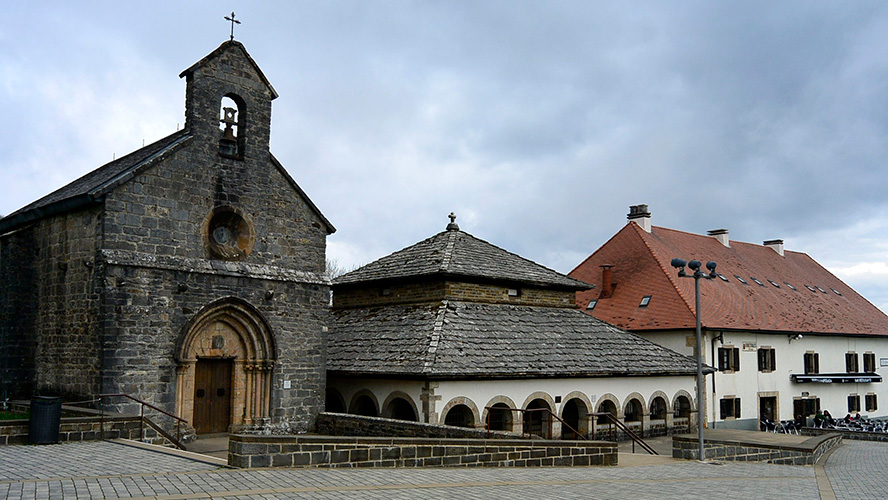
Olite
This small city is like a miniature fairy tale town: its castle and royal palace attract visitors from across Spain due to its incredible architecture. Olite is also full of nobles’ mansions, Renaissance palaces, coats of arms on façades, a Gothic church and even a Roman wall.
The Royal Palace was used by the kings of Navarre for a time, and it was once the most luxurious palace in the whole region. Mainly Gothic in style, it was built on top of a fortress but retains French and Mudejar elements, such as crenelated towers, secret gardens, and terraces with spectacular views.
The church of Santa María la Real is another gem of Olite; its free-standing atrium is worth examining closely to appreciate the decorative biblical scenes.
It’s also well worth walking the village’s cobbled streets and stopping for refreshment in its squares, little open spaces amid a winding medieval layout of captivating spots.
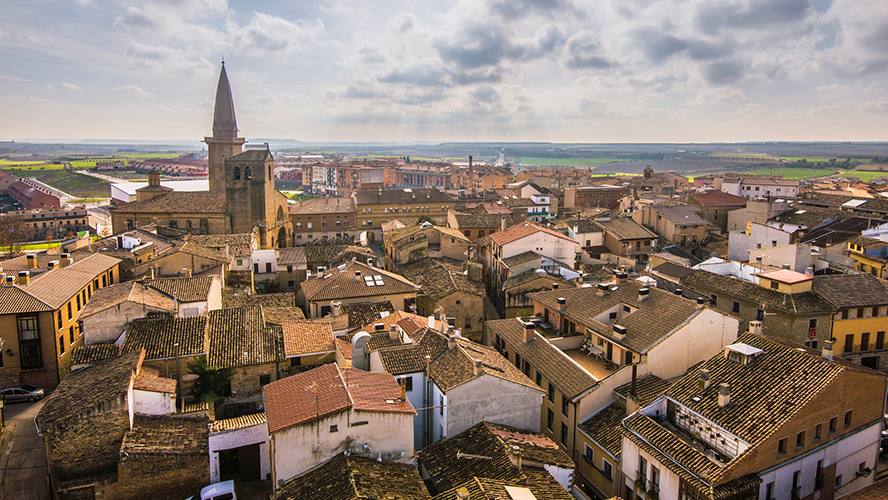
Elizondo
Elizondo is one of the most impressive villages in Navarre due to its wonderful setting in the Elizondo Valley, and because writer Dolores Redondo used it as the location for her Baztán Trilogy, books that were later made into films.
The mythology used by Redondo in her books was inspired by this area, where medicinal herbs flourished; local women knew about these plants but were often labelled as witches for using them. In fact, the whole area is marked by places where witches supposedly had their covens.
Take a walk around the village centre and pause at the imposing palaces built by ‘indianos’ when they returned to Spain after emigrating to America. It’s also lovely to sit on one of the terraces by the Bidasoa River to unhurriedly enjoy the food of Elizondo with the relaxing sound of the river in the background.

Nature
Irati Forest
This is the largest beech forest in Europe and is under special protection because of its highly valuable flora and the fauna that takes shelter amid its palette of greens, browns, and ochres.
You would never guess Navarre locals started to deforest the area in the 15th century because of the successful conservation and reforestation work performed here using the same species that have always lived and grown in the forest. You’ll see oaks, fir trees, ferns, willows, and moss, and it’s the perfect place to glimpse deer, roe deer and wild boar, among other animals.
Experts also emphasise that it’s an important reserve for birds who nest in these trees, such as woodpeckers, which are now extremely hard to spot across the rest of Navarre.
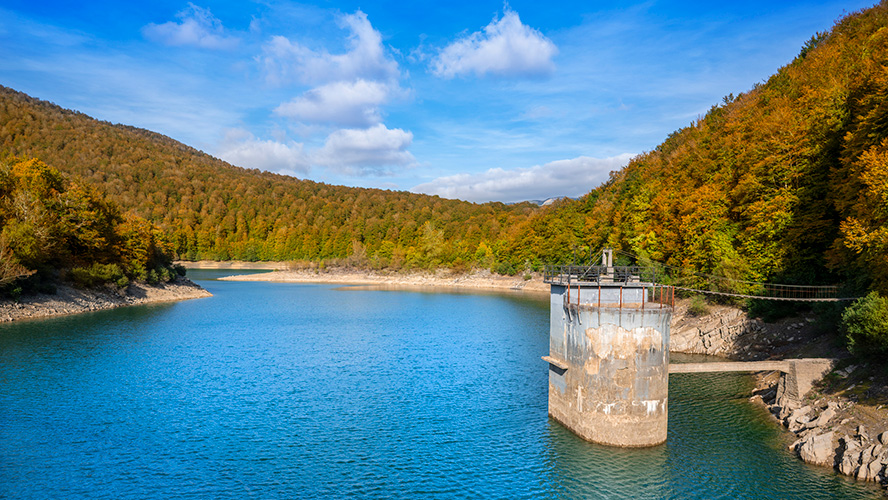
Baztán Valley
This green valley at the foot of the Pyrenees is an idyllic place full of large meadows and dotted with little villages, picturesque hamlets and palaces built by ‘indianos’, people who emigrated to America and built splendid palaces on returning to Spain.
The valley has 15 villages that nestle amid large beech forests with waterfalls in hidden spots that can only be reached on food, such as Xorroxin.
Señorío de Bertiz Natural Park is another gem in this valley and here you’ll find trails that lead to incredible palaces, and a botanical garden that is over a century old and is home to 100 distinct species.
To get a sense of what Baztán is like and its size, head up to the village of Ziga and visit the Baztán Viewpoint to enjoy the stunning views.

Bardenas Reales
The landscape at Bardenas Reales is one of the most surprising in Navarre: it’s a desert that lies just 70 km from the Pyrenees, and this badlands is so unique it’s been made a UNESCO Biosphere Reserve.
It’s hugely different to the green countryside that covers everywhere else in Navarre and you would never imagine that a landscape like this exists in the north of Spain ‒ it looks more like somewhere in Africa. In fact, legend tells that crocodiles once lived in this Martian-like place.
Today, local fauna includes rabbits, genets, vultures, eagles, and owls that live in the thickets. It can be visited by quad bike along signposted trails.
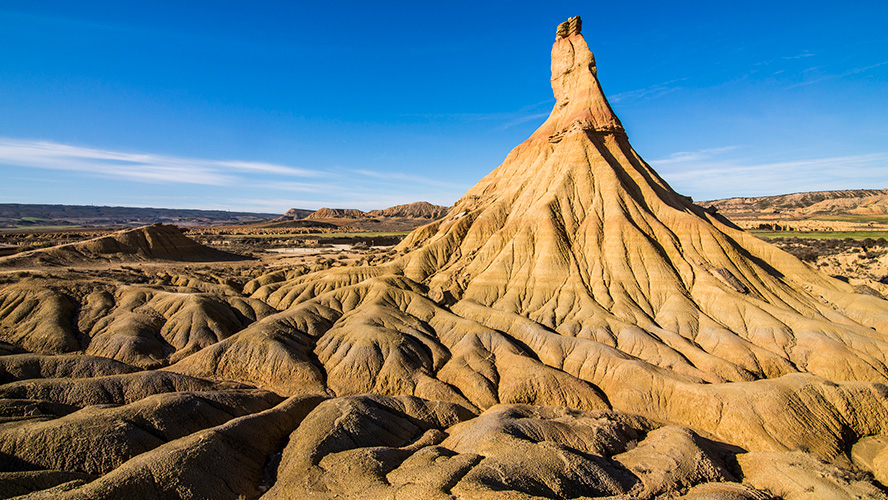
Sierra de Urbasa y Andía
These mountains are one of the most impressive parts of Navarre and the source of the Urederra River. The beech forest is full of little rivers and streams that flow past oak and lime trees, but when you hike the trail to the Urederra you’ll pass green and turquoise lakes and waterfalls that look like they belong in a tropical climate rather than Navarre.
The trail is very easy, well-signposted and can be hiked with children. Don’t forget your camera because you’ll want to take a snap of everything you see.
You might even spot birds such as the black woodpecker and Eurasian treecreeper, and golden eagles and falcons at the peaks.
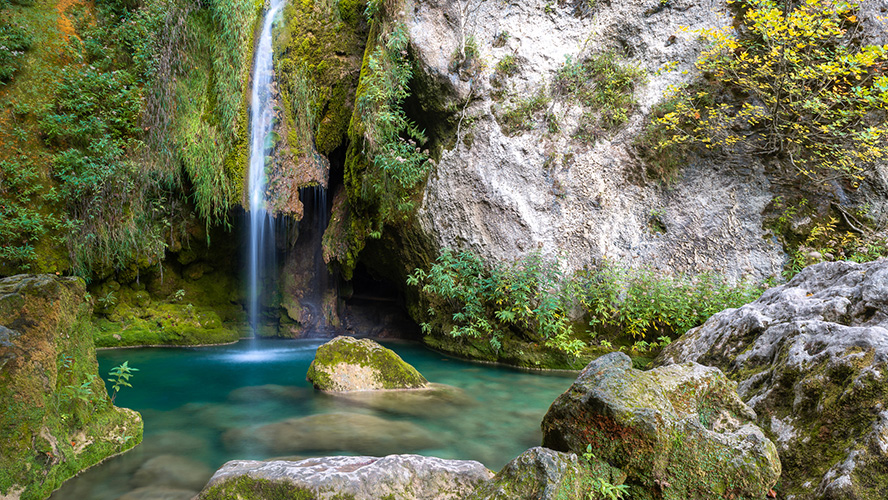
Sierra de Aralar
This natural park is shared with Gipuzkoa and is a large meseta covered with meadows and beech forests in endless shades of green, and areas full of caves and deep chasms.
It’s a relatively unknown zone of countless legends and ancient art; it has 44 dolmens and a menhir called Roldán’s Stone, which can be seen along a fascinating hiking trail.
Another of the most important places in these mountains is the sanctuary of San Miguel, a medieval building that contains chains that, according to legend, were worn by Teodosio de Goñi in penitence for having killed his parents-in-law. It’s said that the murder was the work of the devil and that he freed himself from the chains with the help of St Michael and by killing a dragon.
You’ll spot horses and cows grazing freely in the meadows at Aralar as you hike through the mountains, and these domestic animals live alongside large birds like the bearded vulture and red-billed chough.
Foz de Arbayún and Foz de Lumbier
Another dramatic and unique landscape lies close to Pamplona, about 40 km away: Foz de Arbayún and Foz de Lumbier. These two gorges were shaped by the Irati and Salazar rivers, which carved away at the rock over millions of years to create remarkable vertical walls that are over 100 m high.
The worst, or best, part (depending on who you ask) is the winding road that leads to the two gorges. When you visit Lumbier, it’s a good idea to leave your car at the car park (paid in high season) and hike along an easy trail, the Vía Verde de Irati, which ends at El Diablo, a bridge of numerous legends that was destroyed by the French during the Peninsular War.
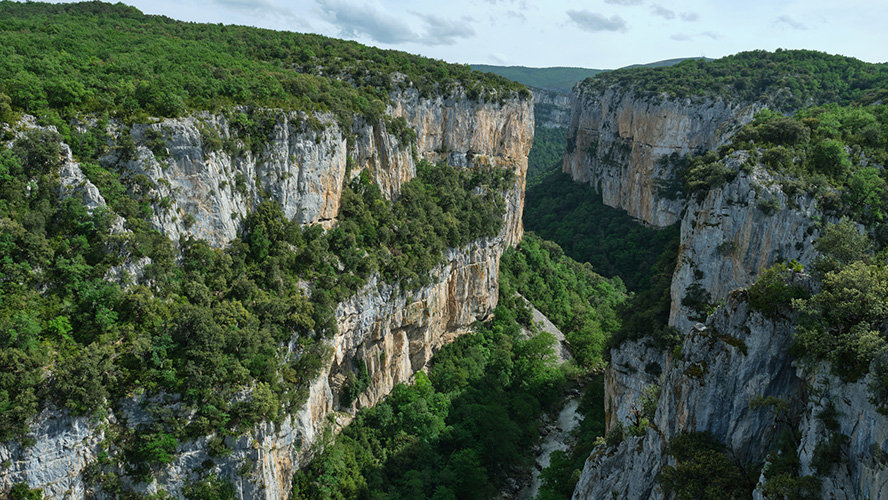
Visiting Foz de Arbayún is even easier because you can’t reach the gorge, only the Iso Viewpoint, where you’ll enjoy spectacular views.
Belagua Valley
The most notable part of this Pyrenean landscape is the Roncal Valley, which has peaks that soar over a thousand metres high, such as Rincón de Belagua, and over two thousand, like the Mesa de los Tres Reyes, the highest in Navarre.
The small villages that are scattered across the valley are full of cobbled streets, stone houses, Roman and Romanesque bridges and even a dolmen, known as the Arrako Dolmen, which is next to the hermitage of Nuestra Señora de Arrako.
The wide plain is marked by ravines formed by the Belagua and Arrakogoiti rivers, which inevitably draw your gaze towards the high, snowy peaks, especially in winter.
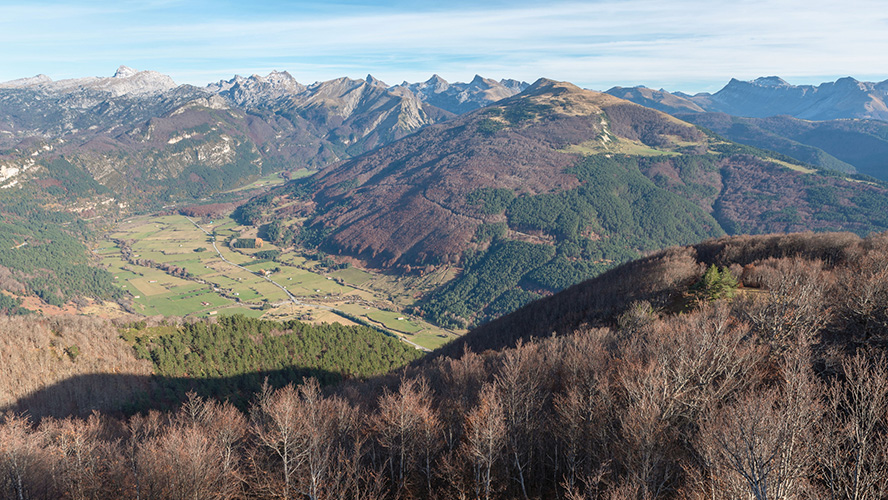
The valley has a long farming tradition and shepherds were important in forming the paths that wind through this remarkable natural space.
You could explore the area by travelling from village to village, or hike trails of various levels of difficulty that can be found across the whole of Belagua. Many of the trails lead to viewpoints with wonderful views.




































































